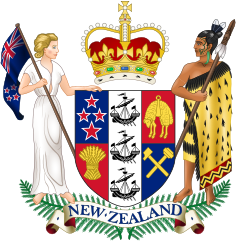

Litter is a global issue and has a significant human impact on the environment. It is especially hazardous because it can enter ecosystems and harm a country's biodiversity. Litter is a prevalent environmental issue in New Zealand.
Contents
- Environmental impact of littering
- Litter in waterways and the ocean
- Impact of plastic litter on wildlife
- Impact of organic litter on birdlife
- Legislation
- The Litter Act 1979
- The Litter Amendment Act 2006
- Litter behaviour research
- Objective
- Method
- Key findings
- Demographic
- National Litter Audit 2019
- Sites
- Litter materials
- Cigarette butt litter
- Littering behaviour
- Environmental impact
- Behavioural interventions
- Response
- Fines
- Cigarette butt littering
- Public rubbish bins
- Reducing the impact of plastic
- Anti-litter campaigns
- See also
- References
- External links
New Zealanders are known to take pride in their 'clean green' image. A national survey conducted in December 2017 revealed that 99% of respondents considered the maintenance of New Zealand's 'clean green' image to be of importance. For these reasons the prevention of litter is considered to be of national importance. While New Zealand is considered an environmentally conscious country, it continues to encounter litter issues. Plastic items are recorded to be the most littered item in the country. Cigarette butts and plastic bags are some of the most littered item worldwide and are therefore also pervasive in New Zealand's bird wildlife. Plastic litter is a particularly harmful form of litter as it threatens the New Zealand environment and the wildlife that inhabits it. Due to littering, New Zealand's endangered species are at risk of extinction. The National Litter Audit revealed that 80% of the litter found in the country's waterways originated from the land. Plastic litter in particular threatens wildlife because it contaminates the water and therefore poses health risks to marine wildlife and seabirds.
The Keep New Zealand Beautiful organisation was founded in 1967. The 1979 Litter Act established the organisation as the national body responsible for the promotion of litter control in New Zealand. Since 2018, Keep New Zealand Beautiful has released national reports concerning the issue of litter in New Zealand's regions. The National Litter Behaviour Study was released in 2018 and the Litter Audit was released in 2019. These reports have informed a response to litter in New Zealand. Policy measures for litter abatement include fines and a national action plan to reduce plastics. Further strategies for litter abatement include educational programmes and campaigns, most of which are developed by Keep New Zealand Beautiful.








